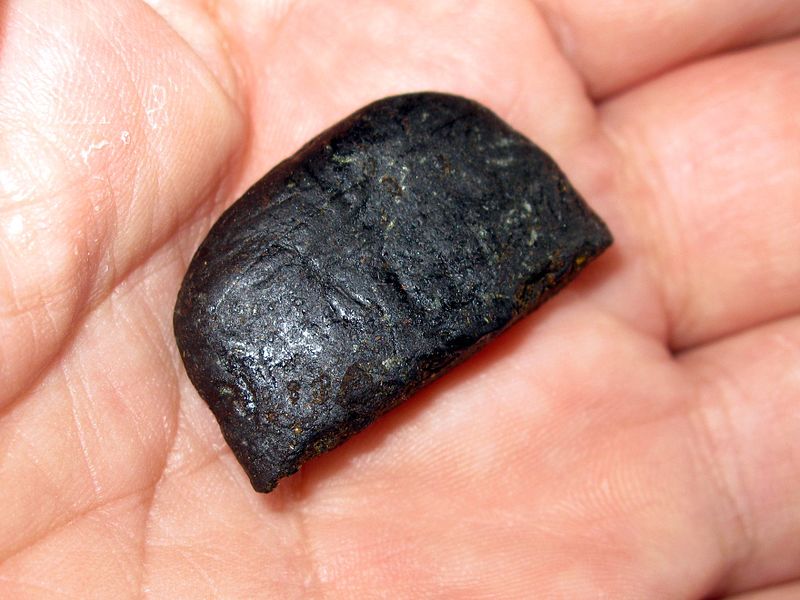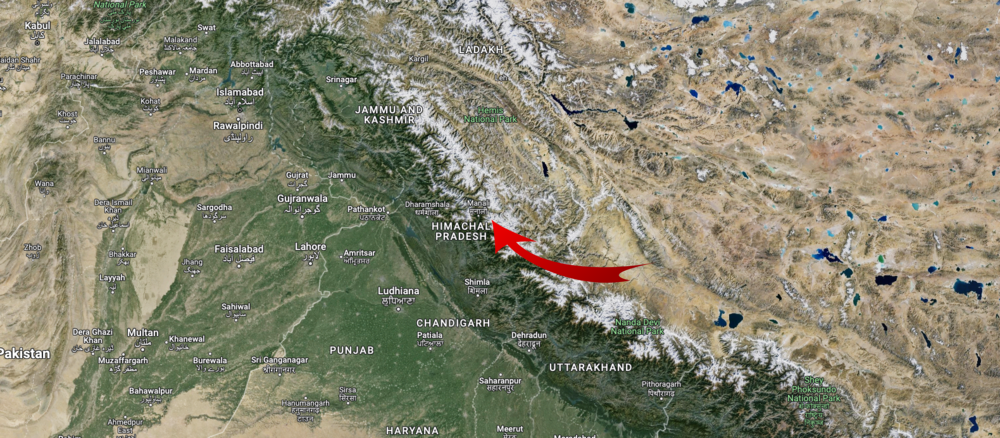Nestled in the picturesque Parvati Valley of the Indian Himalayas, the small village of Manali has long been renowned for producing some of the world’s finest hashish.
This potent cannabis concentrate, known as Manali cream, Manali hash, Malana Cream or simply Manali, is hand-rubbed from the resin glands of live cannabis plants and often considered the cream of the crop among hash connoisseurs.

The region’s long history of selective breeding has resulted in distinctive local landraces prized for their high resin production and complex terpene profiles.
When expertly hand-processed using traditional techniques, the result is a malleable, aromatic hashish characterized by a creamy color and consistency.
While its international transport remains illicit, the hashish continues to be widely produced and consumed locally in India where it plays a role in some traditional and spiritual practices.
I’m lucky enough to have visited the area some years ago so can attest to the incredible quality of the hashish coming out of Manali. Or Malana.
Manali-style hashish produced from high-quality genetics remains among the most sought-after artisanal products.

Despite this, and now proven medical benefits, the drug war against people continues in India. And the local police do not apparently welcome tourists these days.
The History of Manali Hashish
The history of Manali hashish is deeply intertwined with the cultural and spiritual traditions of the Indian Himalayas, particularly in the Parvati Valley region of Himachal Pradesh.
For centuries, cannabis has played a significant role in Hindu and Shaivite practices, with references to its use as a sacred plant appearing in ancient texts like the Vedas and Puranas.
The Parvati Valley’s unique geography and climate have made it an ideal location for growing exceptionally potent cannabis.
The high altitude, fertile soil, and abundant sunlight and water create the perfect conditions for cannabis plants to thrive and produce large amounts of resin.
Over generations, local farmers have selectively bred the plants to enhance their desirable qualities, resulting in distinctive landraces known for their high THC content and complex terpene profiles.
Hashish production in the region dates back hundreds of years, with knowledge of traditional hand-rubbing techniques passed down through families and communities.
The process involves carefully sifting dried cannabis flowers to remove the trichome-rich resin glands, which are then gently heated and pressed to create a dense, malleable substance with a characteristic aroma and creamy consistency.
In the 1960s and 70s, Manali and the Parvati Valley became popular stops along the “Hippie Trail,” a well-traveled route through Asia frequented by Western travelers seeking spiritual enlightenment and alternative lifestyles.

Many were drawn to the region’s ancient cannabis culture and the legendary quality of its hashish. This influx of foreign interest helped to spread the reputation of Manali hash beyond India’s borders.
Despite its cultural significance and long history, hashish production and possession remain illegal under India’s Narcotic Drugs and Psychotropic Substances Act of 1985.
However, enforcement of these laws varies and the practice persists, with Manali hashish continuing to be widely consumed locally and exported illicitly to other parts of the world.
In recent years, as attitudes towards cannabis have shifted globally and more countries have moved towards legalization and regulation, there has been growing interest in traditional hashish production methods and the unique qualities of regional varieties like Manali cream.
Some legal cannabis companies have sought to recreate the characteristics of these traditional products using modern cultivation and processing techniques.
Seeds are available though only through extremely specialised companies.
Today, while the legal landscape surrounding hashish remains complex and varies widely by jurisdiction, Manali and the Parvati Valley are still widely recognized as one of the world’s premier regions for high-quality, artisanal hashish production.
The area’s unique history, culture, and terroir continue to be celebrated by cannabis enthusiasts and researchers interested in preserving and understanding the plant’s rich heritage.
The Effects of Manali Hashish
The effects of Manali hashish, like any cannabis product, can vary depending on factors such as the individual consuming it, the specific chemical composition of the hashish, the amount consumed, and the method of consumption.

However, there are some general effects associated with the use of high-quality hashish like that produced in the Manali region.
One of the most notable effects of Manali hashish is its potency.
The ideal growing conditions and selective breeding practices of the Parvati Valley result in cannabis plants with high levels of THC, the primary psychoactive compound in hashish.
When consumed, this can lead to a strong, long-lasting high characterized by feelings of euphoria, relaxation, and altered perception.
Users often report a heightened sense of well-being and a deep feeling of physical and mental relaxation. Some describe a sense of increased creativity, introspection, and philosophical or spiritual insight.
These effects can be particularly pronounced with Manali hashish due to its reputation for producing a clear, cerebral high.
At the same time, the high THC content can also result in more intense psychoactive effects, particularly for inexperienced users or those consuming larger amounts.
These can include altered perception of time, heightened sensory experiences, impaired memory and concentration, and increased appetite, commonly known as “the munchies.”
In some cases, especially with excessive consumption, users may experience less desirable effects such as anxiety, paranoia, or dizziness. These negative experiences can be more likely to occur in individuals with a low tolerance for THC or those predisposed to anxiety or other mental health issues.
It’s worth noting that the effects of Manali hashish, like any cannabis product, can also be influenced by the presence of other compounds in the plant, such as terpenes and flavonoids.
These compounds can interact with THC and other cannabinoids to produce what’s known as the “entourage effect,” modulating the overall experience in subtle but meaningful ways.
The unique terpene profile of Manali hashish, influenced by the region’s specific cannabis genetics and production methods, is often described as contributing to its distinct sensory and psychoactive qualities.
Many users report a complex, aromatic smoke and a high that feels particularly smooth and balanced compared to other hashish varieties.
Consuming any psychoactive substance, especially from an unregulated source, comes with potential dangers and health considerations that should not be overlooked. Be careful out there!
Charas Walas – The Hash Producers in Manali
The art of crafting Manali cream is a time-honored tradition that demands a deep understanding of the cannabis plant and a commitment to the meticulous techniques passed down through generations of charas walas.
These skilled artisans embark on their journey each morning, long before the sun’s rays have burned away the dew that clings to the leaves and buds of the cannabis plants.
Clad in their distinctive leather aprons, known as kurtas, the charas walas make their way through the dense fields of cannabis that blanket the slopes of the Parvati Valley.
The kurtas, which extend from the chest to the knees, are the key to the entire process. Made from thick, unfinished leather, they provide the perfect surface for the sticky trichomes to adhere to as the charas walas brush against the plants.
As they walk through the fields, the charas walas gently run their hands over the buds and leaves, taking care not to damage the delicate trichomes.
The resin glands, which contain the highest concentration of THC and other cannabinoids, stick to the leather, accumulating with each pass through the field.
The timing of this process is crucial. The charas walas must navigate the fields in the early morning hours when the plants are still wet with dew.
The moisture helps the trichomes to stick more easily to the leather and prevents them from oxidizing in the heat of the midday sun, which can degrade the quality of the final product.
Throughout the morning, the charas walas will pause periodically to scrape the accumulated resin from their kurtas using a small, curved knife known as a sickle.
The resin, which has a sticky, tar-like consistency at this stage, is carefully gathered and rolled into balls or logs.
This process is repeated until the entire field has been harvested, with the charas walas often covering several kilometers in a single morning. Once the resin has been collected, it is taken to a cool, dry place for processing.
The next stage involves kneading and pressing the resin to remove any remaining plant matter and to distribute the oils and cannabinoids evenly throughout the mixture.
This is a delicate process that requires a skilled hand and a keen eye for consistency and texture.

Finishing Touches
Finally, the pressed resin is rolled and shaped into the final product, which can take the form of balls, sticks, or flat discs, depending on the preferences of the charas wala and the demands of the market.
The finished Manali cream is then wrapped in plastic or wax paper to protect it from the elements and to preserve its potency.
The entire process, from the early morning harvest to the final pressing and shaping, can take several days and requires a level of skill and dedication that is rare in today’s fast-paced, industrialized world.
For the charas walas of the Parvati Valley, however, it is a way of life that is deeply ingrained in their culture and their connection to the land.
Despite the challenges posed by legal restrictions and the changing attitudes towards cannabis, the charas walas continue to practice their craft with the same devotion and attention to detail that their predecessors did centuries ago.
In doing so, they not only keep the tradition of Manali cream alive but also preserve a vital link to the cultural and spiritual heritage of the region.
The story of Manali cream and the charas walas who produce it is one of resilience, artistry, and a profound respect for the natural world.
It is a testament to the enduring power of tradition and the indomitable spirit of those who have chosen to live their lives in harmony with the land and its bounty.


